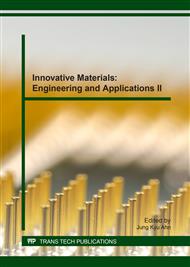p.457
p.463
p.473
p.479
p.489
p.496
p.502
p.510
p.516
Elastic Fracture Toughness for Ductile Metal Pipes with Circumferential Surface Cracks
Abstract:
Surface cracks have long been recognized as a major cause for potential failures of metal pipes. In fracture analysis, the widely used method is based on linear elastic fracture mechanics. However, for ductile metal pipes, it has been known that the existence of plasticity results in easing of stress concentration at the crack front. This will ultimately increase the total fracture toughness. Therefore, when using linear elastic fracture mechanics to predict fracture failure of ductile metal pipes, the plastic portion of fracture toughness should be excluded. Otherwise, the value of fracture toughness will be overestimated, resulting in an under-estimated probability of failure. This paper intends to derive a model of elastic fracture toughness for steel pipes with a circumferential crack. The derived elastic fracture toughness is a function of crack geometry and material properties of the cracked pipe. The significance of the derived model is that the well-established linear elastic fracture mechanics can be used for ductile materials in predicting the fracture failure.
Info:
Periodical:
Pages:
489-495
Citation:
Online since:
February 2017
Authors:
Price:
Сopyright:
© 2017 Trans Tech Publications Ltd. All Rights Reserved
Share:
Citation:


